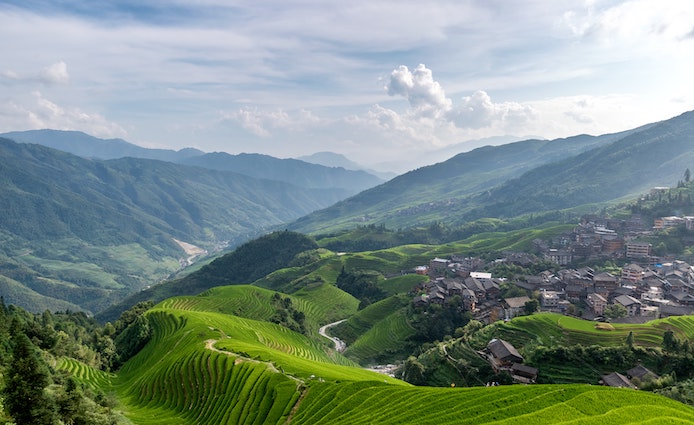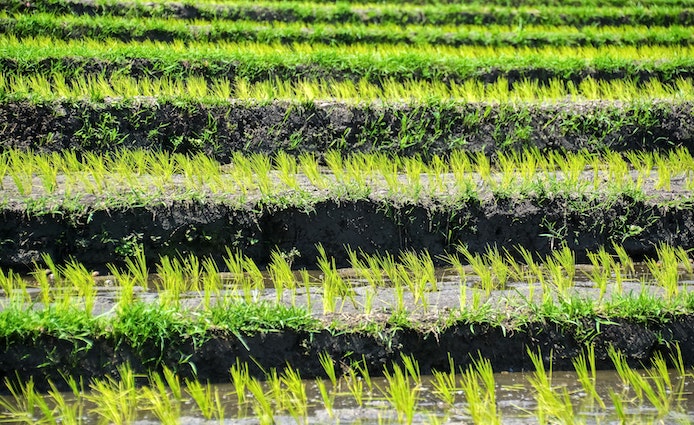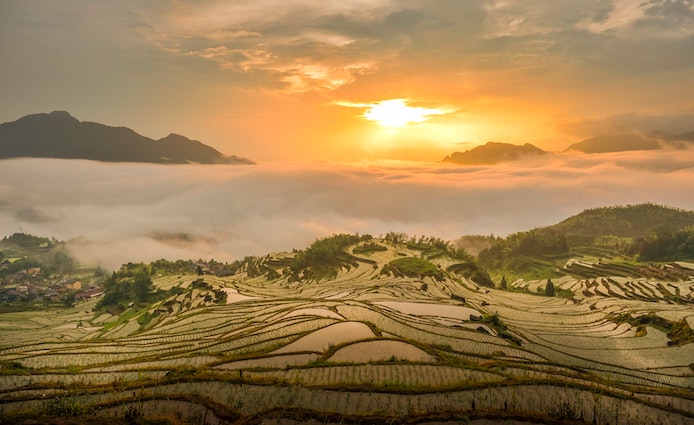
Biodiversity in the Hani Cultural Landscape 3
Rice, fish and biodiversity
To grow their staple crop, rice, the Hani people select gentle slopes with access to water sources in the Ailao Mountain and convert them to vast terraced areas. Since it is rather difficult to use water flowing from the Red River in the deep valley, instead, the Hani, over centuries, have developed a complex irrigation system to harvest and divert springs, seepage, creeks and streams towards the rice terraces.

Long ditches constructed to control water flows are distributed into secondary and tertiary-level ditches through stones or wood, within which small openings are cut. The volume of water flow is determined by the size of the opening, which is dependent on the amount of rice requiring irrigation. Surplus water is drained from the upper rice fields to the lower rice fields through sluices that include a bamboo sieve to prevent large fish from escaping. Rice terraces also operate as artificial wetlands, helping to store water and contain erosion. Water in the rice fields is not drained in the dry season in order to save water for the next crop.
In addition to water distribution, the Hani people also use the irrigation system to transport fertilizers like forest litter and livestock manure, thereby saving time and input costs. This customary management of the irrigation system ensures that water resources are shared among villagers and that the systems are well maintained.

In order to cope with climatic, water and soil variations, the Hani people breed hundreds of rice varieties in the Ailao Mountains. For example, they select rice varieties with high stalks that are used as roofing material for their traditional mushroom-shaped houses and as fodder to feed buffalo. Some rice varieties are suitable to the cool climate in the high elevation zones, while others are adapted to the warm climate in the low elevation zones.
The rice terraces are also used to raise and collect a variety of aquatic species, including various fish (e.g., carp, eel and loach), ducks, snails, shrimps and crabs for food, and wild plants for fodder. Local people cultivate soybeans and a popular Yunnan herb known as the “fishy-smell” herb (Houttuynia cordata).

In order to support the fish culture in the rice fields, families breed fish in small ponds built along the creeks and streams in the watershed. After rice seedlings are transplanted, the breeding fish are taken to the rice fish to produce fish fry that will then grow in rice terraces. Fish not only provide farmers with an important source of protein and income, but also help control insects and weeds, and enrich the soil in the rice fields. Another benefit is that when there is a shortage of water, local farmers may switch from rice cultivation to dry farming of other crops, such as maize and vegetables.
Reference: Our World-under CC BY-NC-SA 3.0
Photo Resource: Unsplash
If there's any copyright issue involved, please contact us to delete.



